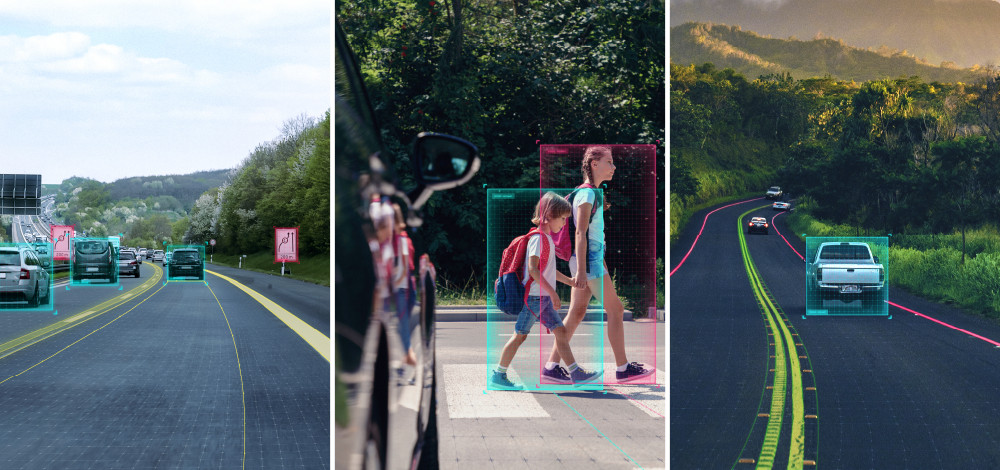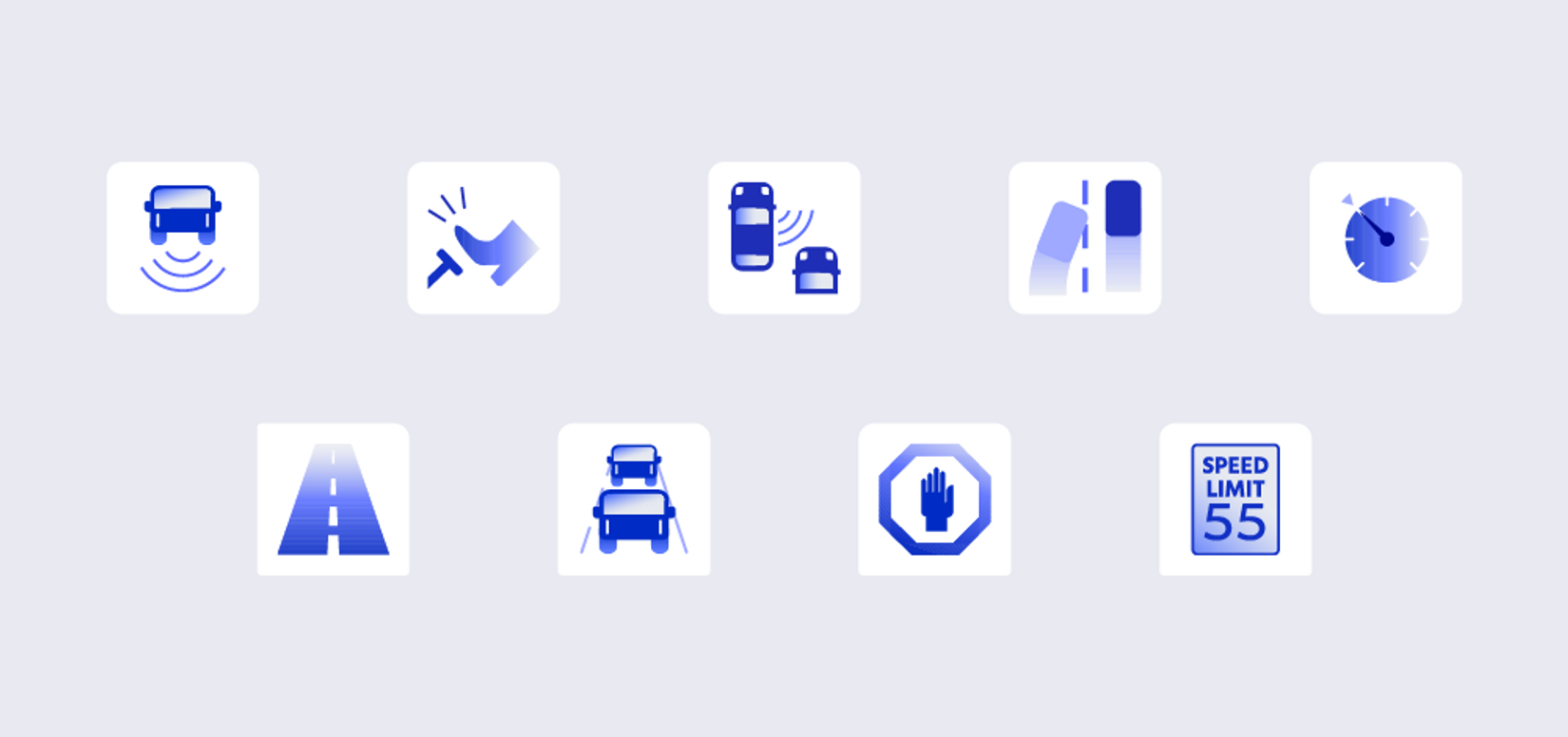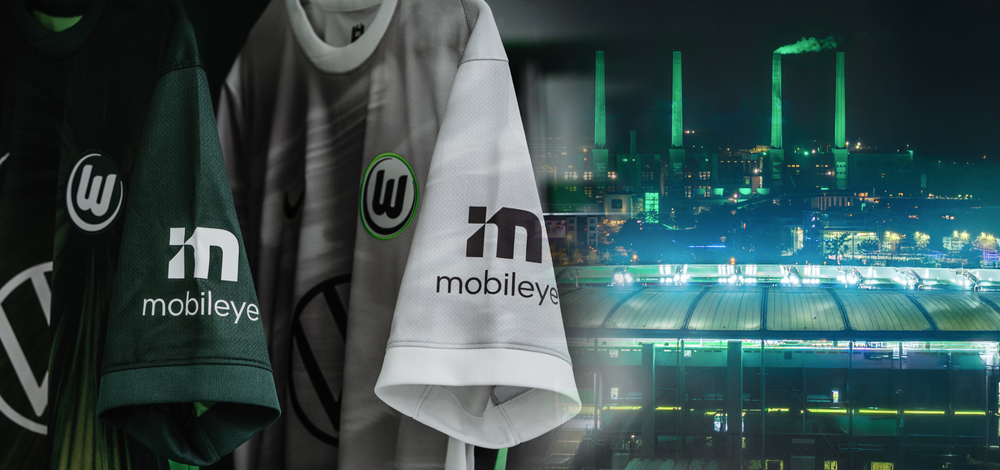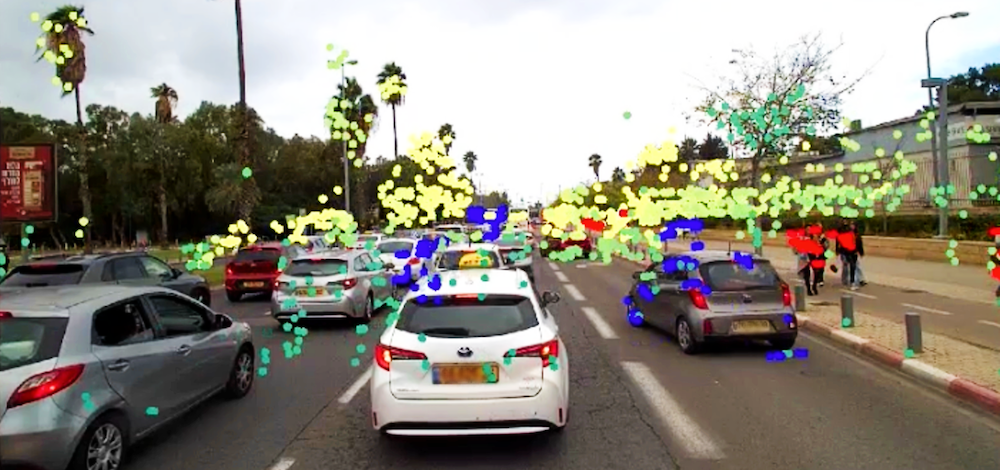blog
|
February 14, 2024
What does ADAS stand for? And what are its features?
Most new cars on the market today come equipped with advanced driver-assistance systems. Here are some of the features you're likely to encounter.

ADAS features share the common goals of making driving easier and our roads safer.
ADAS stands for Advanced Driver-Assistance System — and chances are that if your car was made in the past decade or two, it has some kind of ADAS features on board.
Mobileye has, for the past quarter of a century, been developing and supplying the computer vision technology that enables many ADAS features. Dozens of automakers sell hundreds of car models around the world with ADAS features powered by our technology, totaling more than 140 million vehicles to date (and counting). And we're continuously improving our core technologies to deliver ever more advanced capabilities.
In this, the second installment of our Mobileye 101 series, we'll take you through some of the ADAS features you're likely to see in new cars on the road today, and how the state of driver assistance technology is evolving towards the future.
ADAS features today

Forward Collision Warning is one of the most basic forms of driver assistance, monitoring the area in front of the vehicle and warning the driver of an imminent collision.
Automatic Emergency Braking builds upon the passive function of Forward Collision Warning by actively actuating the brakes to avoid collision.
Blind Spot Detection (also known as Blind Spot Warning or Blind Spot Monitor) alerts the driver to any obstacles in the hardest-to-see sections of the driver's field of view.
Lane Departure Warning tracks the boundaries of the lane and alerts the driver if they're drifting over the line. Lane Keep Assist goes further by actively intervening to steer the vehicle back into its lane. Lane Centering goes yet further to actively keep the vehicle centered within its lane. And Lane Change Assist goes further still by switching lanes automatically.
Adaptive Cruise Control maintains a set speed on the highway while monitoring the distance to the vehicle ahead, slowing down and speeding up to keep a safe following distance.
Highway Assist is one of the most advanced forms of ADAS, combining such features as Adaptive Cruise Control and Lane Centering to partially automate cruising on interurban highways.
Traffic Jam Assist is similar to Highway Assist, but is designed to operate at lower speeds in stop-and-go traffic, partially automating one of the most mundane aspects of driving.
Traffic Sign Recognition detects and identifies all manner of traffic signs posted alongside the road, informing the driver and vehicle systems of relevant signals.
Intelligent Speed Assist monitors traffic signs and other parameters of the driving environment to help drivers stay within the speed limit.
The effects of ADAS
Mobileye technology supports a broad range of additional features, from emergency vehicle detection to automatic high beams. Other suppliers specialize in technology such as backup cameras, anti-lock braking systems, and tire pressure monitoring systems. Some automakers even offer specialized systems for towing trailers or driving off-road.
These features all share the common goals of making driving easier and our roads safer. And they've proven effective: the Insurance Institute for Highway Safety (IIHS) found passive Blind Spot Detection to reduce the instance of lane-change collisions resulting in injuries by 23 percent, for example, and the active intervention of Automatic Emergency Braking to reduce rear-end collisions by 50 percent (resulting in 56 percent fewer injuries).
As these features grow more commonplace, capable, and effective, automotive safety standards have increased. Organizations like IIHS and Euro NCAP have instituted additional testing (and award higher marks) for vehicles equipped with key ADAS features. In many markets, government authorities require all new vehicles on the market to come with certain ADAS features fitted as standard, such as the Intelligent Speed Assist required under the EU's latest General Safety Regulation.
Evolving beyond basic ADAS

Now in our 25th year, Mobileye continues to develop and improve the technologies to support ADAS features such as these. Our computer vision technology leads the industry, especially in its renowned ability to derive three-dimensional information from a single camera. Our latest algorithms are trained to not only detect other road users, but determine their intent – which can be particularly useful in predicting, for example, if a pedestrian is waiting by the curb or is about to step out into the street. And our latest EyeQ™ systems-on-chip support more powerful camera sensors (with greater resolution and field of view) to see farther and wider, along with highly sophisticated artificial intelligence capabilities to derive more insights from the driving environment.
The next step in evolving the capabilities of driver assistance is adding REM™-generated maps. Our Cloud-Enhanced Driver-Assist™ solution brings to the ADAS sphere the mapping tech initially designed for autonomous vehicles, enabling such features as lane centering (even in the absence of visible lane markers) and traffic-light relevancy (which can alert drivers, for instance, if they're about to run a red light).
With additional sensors, processing power, and RSS™-based driving policy, Mobileye SuperVision™ takes driver assistance to the next level, enabling eyes-on/hands-off automated driving capabilities. From there, we're stepping up to eyes-off/hands-off operation with Mobileye Chauffeur™ and driverless mobility services with Mobileye Drive™ as we strive to incrementally evolve from driver assistance to the autonomous future.
Share article
Press Contacts
Contact our PR team








